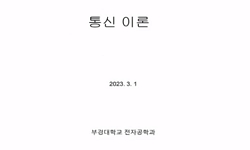Among the Confucian scholars of the Joseon Dynasty, there are few who were as well-versed in the philosophical thought of Confucianism, Buddhism, and Taoism as Yulgok. Yulgok is a person who critically responded to the limitations of various dichotomo...
http://chineseinput.net/에서 pinyin(병음)방식으로 중국어를 변환할 수 있습니다.
변환된 중국어를 복사하여 사용하시면 됩니다.
- 中文 을 입력하시려면 zhongwen을 입력하시고 space를누르시면됩니다.
- 北京 을 입력하시려면 beijing을 입력하시고 space를 누르시면 됩니다.

율곡의 소통론에 반영된 장자 제물론의 철학사상 = The Philosophical Thought of Zhuangzi's Equality of Things Reflected in Yulgok's Communication Theory
한글로보기https://www.riss.kr/link?id=A108428616
-
저자
이종성 (충남대학교)

- 발행기관
- 학술지명
- 권호사항
-
발행연도
2022
-
작성언어
Korean
-
주제어
율곡 이이 ; 장자 ; 제물론 ; 대통합 ; 소통론 ; Yulgok Yi Yi ; Zhuangzi ; Equality of Things(齊物論) ; Great Integration ; Communication Theory
-
등재정보
KCI등재
-
자료형태
학술저널
-
수록면
5-45(41쪽)
- DOI식별코드
- 제공처
-
0
상세조회 -
0
다운로드
부가정보
다국어 초록 (Multilingual Abstract)
Among the Confucian scholars of the Joseon Dynasty, there are few who were as well-versed in the philosophical thought of Confucianism, Buddhism, and Taoism as Yulgok. Yulgok is a person who critically responded to the limitations of various dichotomous worldviews while avoiding academic uniformity. He has a characteristic of pursuing academic openness on the premise of philosophical communication theory.
In particular, this article examines the specific contents of Yulgok's communication theory, paying attention to the reflection of Zhuangzi's way of thinking of the Equality of Things. Most of the concepts and contents of Zhuangzi's philosophy found throughout Yulgok's collections are closely related to the way of thinking of the Equality of Things, which is the core idea of Zhuangzi. This leads us to think the result Yulgok tacitly admitted that the Equality of Things contains is a high-level view of the world that does not remain in vain logic or sophistry. In fact, it is confirmed that Yulgok, while living in an era that requires social reform and great integration, requested that the Equality of Things be applied as a philosophical method to overcome the difficulties of the time.
This article covers three main topics. First, it is a task of the times or a request for communication in the midst of non-communication. Second, it is the communication of the Equality of Things about individualized beings. Third, it is the communication of the Equality of Things about the opposing party theory. These three themes are not separate and are not independent, but are closely related to each other and thus have interactivity. In short, Yulgok paid attention to the Equality of Things of Zhuangzi in order to establish a communication theory to achieve great social and political integration with various ideologies beyond all confrontations and divisions. This article is the first achievement of introducing Yulgok's view of Zhuangzi to academia, and continuous follow-up research on related topics is requested in the future.
국문 초록 (Abstract)
조선조 유학자 가운데 율곡만큼 유불도 삼가사상에 조예가 깊었던 인물도 드물다. 율곡은 학문적 획일주의를 지양하면서 각종의 이분법적 세계관의 한계에 대해 비판적으로 대응한 인물이...
조선조 유학자 가운데 율곡만큼 유불도 삼가사상에 조예가 깊었던 인물도 드물다. 율곡은 학문적 획일주의를 지양하면서 각종의 이분법적 세계관의 한계에 대해 비판적으로 대응한 인물이다. 그는 철학적 소통론을 전제로 학문적 문호 개방성을 지향한 특성이 있다.
이 글은 특히 율곡의 소통론에 장자의 제물론적 사유방식이 반영되어 있음을 주목하고, 그 구체적인 내용을 검토한 것이다. 율곡의 문집 곳곳에서 확인되는 장자철학의 여러 개념과 내용들은 대부분 장자의 핵심사상인 제물론의 사유방식과 깊은 연관성이 있다. 이러한 점은 율곡이 장자의 제물론이 결코 허황된 논리이거나 궤변론에 머물지 않는 차원 높은 세계관을 담고 있는 것임을 암암리에 인정한 결과라고 여기게 한다. 실제로 율곡은 사회적 개혁과 대통합이 요청되는 시대를 살면서 장자의 제물론이 당대의 난국을 타개할 수 있는 철학적 방편으로 적용될 수 있기를 요망하였음이 확인된다.
이 글은 크게 세 가지 주제를 다룬다. 첫째, 시대의 과제 또는 불소통 속 소통의 요청이다. 둘째, 개별화된 존재에 대한 제물론의 소통이다. 셋째, 대립적 당론에 대한 제물론적 소통이다. 이와 같은 세 가지 주제는 별개의 것으로 독립된 것들이 아니라 서로 긴밀하게 연계되어 있어서 상호 작용성을 갖는다. 요컨대 율곡은 일체의 대립과 분열을 넘어 각종의 이념과 사회정치적인 대통합을 이루기 위한 소통론을 확립하고자 장자의 제물론에 주목한 것이라 볼 수 있다. 이 글은 학계에 율곡의 장자관을 최초로 소개한 성과로서, 향후 관련 주제의 지속적인 후속 연구에 토대 역할을 담당할 수 있을 것이다.
1 "栗谷全書"
2 "論語"
3 陳鼓應, "老莊新論" 中華書局 1999
4 "한국민족문화대백과사전, 천도책"
5 이종성, "탈경계 시대의 율곡학에 대한 인문학적 성찰" (사)율곡학회 44 : 5-50, 2021
6 김학주, "장자" 을유문화사 2010
7 오강남, "장자" 현암사 1999
8 안동림, "장자" 현암사 2010
9 오항녕, "율곡의 경연일기" 너머북스 2016
10 이종성, "율곡과 노자" 충남대학교출판문화원 2016
1 "栗谷全書"
2 "論語"
3 陳鼓應, "老莊新論" 中華書局 1999
4 "한국민족문화대백과사전, 천도책"
5 이종성, "탈경계 시대의 율곡학에 대한 인문학적 성찰" (사)율곡학회 44 : 5-50, 2021
6 김학주, "장자" 을유문화사 2010
7 오강남, "장자" 현암사 1999
8 안동림, "장자" 현암사 2010
9 오항녕, "율곡의 경연일기" 너머북스 2016
10 이종성, "율곡과 노자" 충남대학교출판문화원 2016
11 정화열, "몸의 정치" 민음사 1999
12 이종성, "맨 얼굴의 장자" 동과서 2017
13 신동호, "동양철학사상논고" 충남대학교출판문화원 2012
14 로저 에임즈, "동양철학, 그 삶과 창조성" 성균관대학교출판부 2005
15 "국역 율곡전서" 한국정신문화연구원 1996
16 신영복, "강의 나의 동양고전 독법" 돌베개 2004
17 宋一夫, "齊物" 現代敎育出版社 2014
18 "醇言"
19 "莊子集釋" 中華書局 1999
20 吳光明, "莊子" 東大圖書公事 2015
21 "莊子"
22 "禮記"
23 "正蒙"
24 "朱子語類"
25 "列仙傳"
26 이세영, "[유레카] 갈라치기"
동일학술지(권/호) 다른 논문
-
- (사)율곡학회
- 이승률
- 2022
- KCI등재
-
기학(氣學)의 변용(變容)을 통해 본 이이(李珥)의 인간관
- (사)율곡학회
- 모영환
- 2022
- KCI등재
-
율곡 철학의 근대성과 탈근대성 - 지각론과 수양론을 중심으로
- (사)율곡학회
- 김우형
- 2022
- KCI등재
-
- (사)율곡학회
- 최식
- 2022
- KCI등재




 KCI
KCI KISS
KISS







